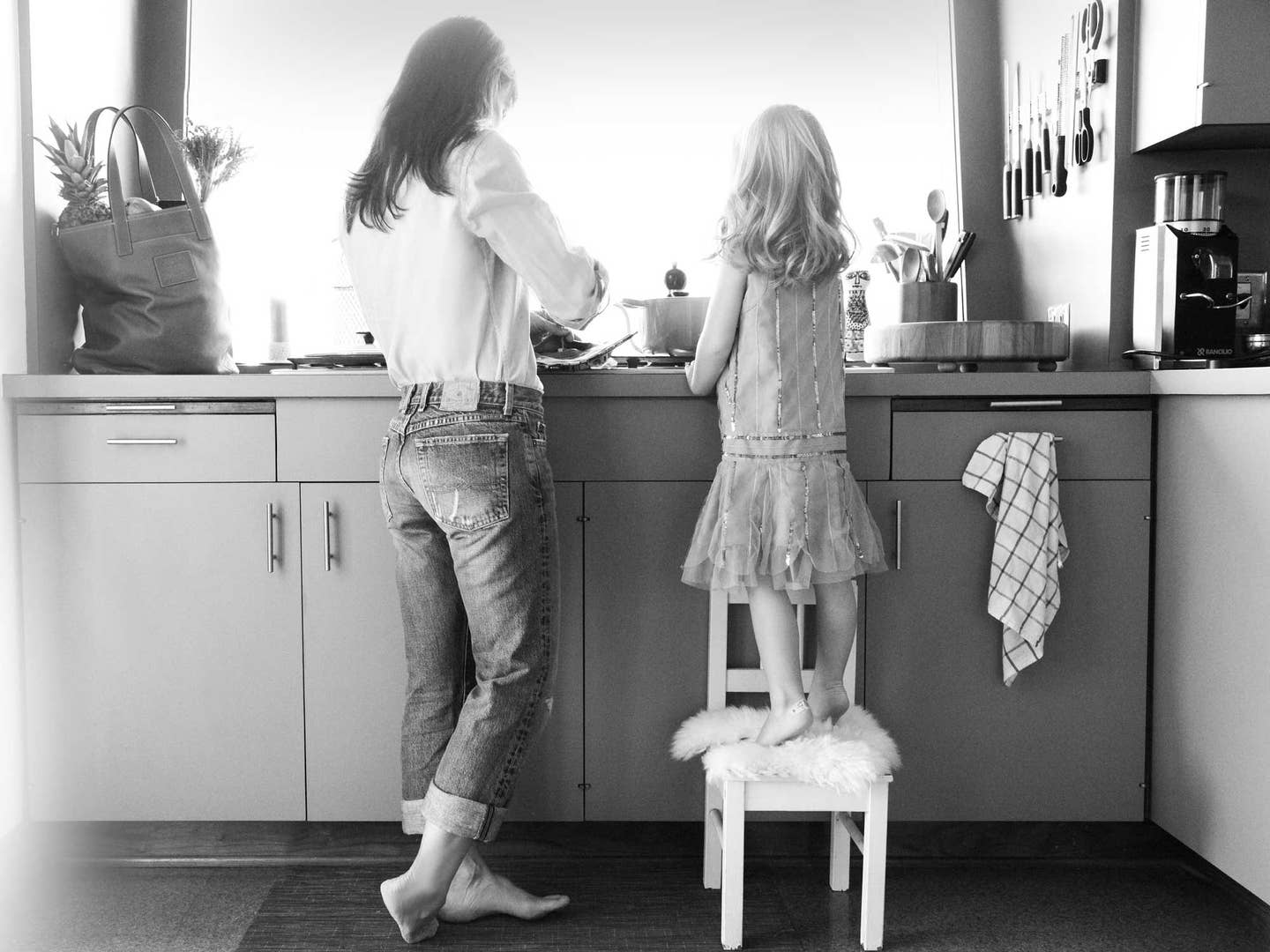
A Lesson on Parenting From the Kitchen Counter
Everything you need to know about being a good human starts in our favorite room
One evening, my 4-year-old daughter piped up, asking if she could do something to help with dinner. I was dicing carrots at the time, and a frying pan was crackling, so my first instinct was, no, but thanks.
Then, I thought, well, why not? So I set up a cutting board. One of the unarticulated pleasures of parenting is that you have to continually teach really basic things. It requires that you reverse engineer something you do without thinking—dicing, operating a garden hose, balancing on a bike—and then explain it with the cartoon clarity of an Ikea assembly pamphlet.
So, I sliced the carrots lengthwise for flat-side stability. I showed her how to crimp her fingers out of range and to listen for that rewarding clunk when the steel cleaved through to the wood. That evening, I taught a person how to cut a thing with a knife. Deeply satisfying, yet it was her pride that filled the room. My 2-year-old daughter took notice, and soon the competition was on. In no time, I had two sous-chefs, even if one of them was tearing up lettuces from the perch of a booster seat.
At the time, my wife, Lisa, was a medical resident, and suddenly evenings in the kitchen with our daughters, Tarpley and Yancey, were my business. I was looking at a good long stretch in this room, my only companions two illiterate, ululating feral hatchlings. I could either resent that time and rush to get out of there (lots of boxed mac n' cheese), or I could climb a new learning curve, cooking, and heft them with me.
As a kid growing up in South Carolina, the kitchen was an avoided room. Even the doorway was forbidding, hidden behind a large folding screen, because on the other side one might find humiliating evidence of life—smudged walls, the pandemonium of a sink, and that busted back door that might admit people of other races, deliverymen, or clandestine midnight visitors. But, as I found out with my girls, the kitchen is the best room in which to domesticate beastly primates and to teach, well, everything: learning to wield a dangerous tool, long-range planning, focusing on a task, discovery, invention, being the star of the moment (I'll cook), working the back bench (I'll clean).
If I'd paid enough attention, I probably could have synced up the growth chart nicked into the bathroom door frame with the emerging solo performances of complexity: peanut butter and jelly, scrambled eggs, grilled cheese sandwich, pasta and sauce. Pie.
One day, when Yancey was 12 years old, she and a pal announced they would be cooking dinner for 10 and that we should invite friends. Lisa and I were impressed when she showed us a planned-out ingredient list but then worried when she asked us what the word mousse meant. Also, the tiny chef inquired, can you give me a ride to the grocery store?
She and her friend blocked the entrance to the kitchen with chairs—no adults allowed—as if putting on one of their self-written plays. That evening, as 10 adults sat at the table, the little girls brought out their first course, gazpacho salad: diced tomatoes, avocado slices, bits of onion, a lemon dressing, all nested in a single leaf of Bibb lettuce. Along came a chicken-barley soup (made from a homemade stock the kids simmered from a whole chicken), and an improbably juicy pork loin. Jaws dropped when they appeared with a chocolate mousse, and we all had a passing sense of how Mr. and Mrs. Mozart might have felt after Wolfie blocked the doorway to the harpsichord room with the announcement, “I'm going to make up a sonata!”
Every few weeks or so, dinner became an opportunity for enlightenment and revelation. By middle school, the kitchen was the way all of us ordered our day—who's cooking tonight?—with, at first, one of two answers and then four. I was initiated into the inexplicable mystery of kombucha and, later, first tasted kale because Tarpley brought it home one day. (We still debate whether racism adequately explains why versatile yummy collards are marginalized in favor of tasteless greens that chew like tulle.)
But she was also the daughter who insisted we eat something like a big holiday meal every month. Fakesgiving dinner, as she calls it, is still how our family reconvenes. Everyone's in college now (attending, teaching) so the meals aren't as frequent, but when they occur, the menu ends up half tradition and half experiment—and always too excessive, mostly because we can't help ourselves but also because leftovers mean a great lunch tomorrow before everybody hits the road.
Keep Reading
Continue to Next Story










